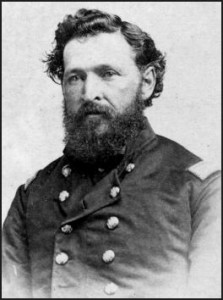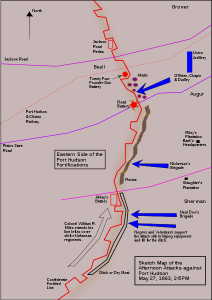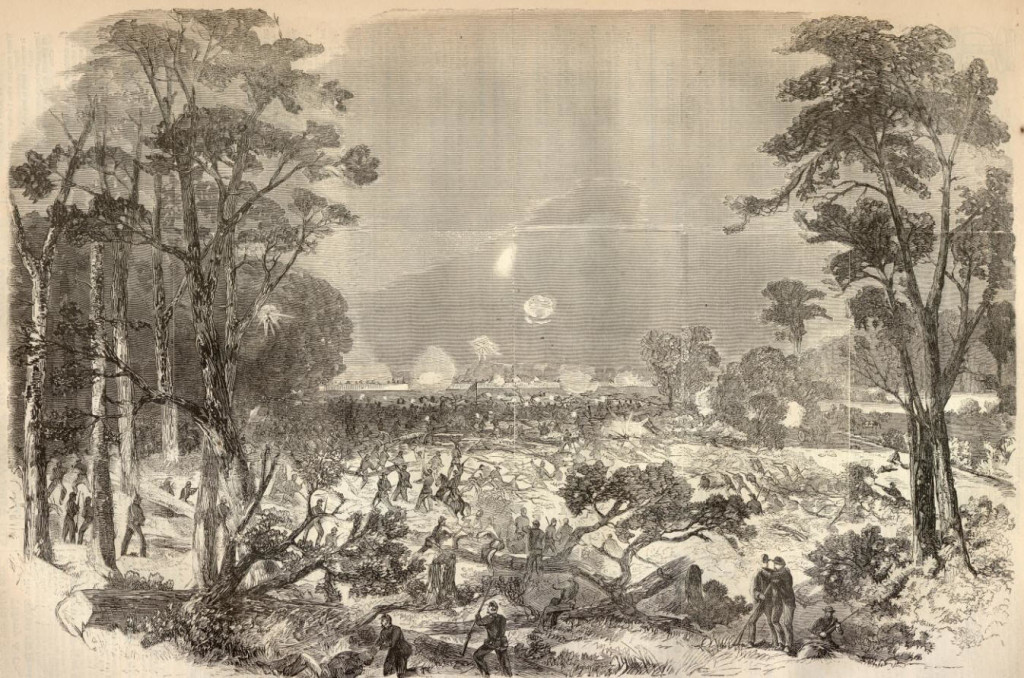These two articles appear as one clipping in the Seneca Falls, NY Library notebook of Civil War clippings, and they do have a common theme – the federal efforts to take Vicksburg and Port Hudson, the last two Confederate strongholds on the Mississippi River.
From a Seneca County, New York newspaper in June 1863:
Funeral of Col. Chapin.
The funeral of Col. EDWARD P. CHAPIN, of the 116th N.Y. Volunteers, took place at Waterloo on Saturday of last week, and the ceremonies were of a most imposing character. Forty members of the Buffalo “Tigers,” of which organization deceased was one of the original members, the Union Cornet Band, and Col. Wm. F. Rogers, Lieut. Cols. C.W. Sternberg and H.C. Thomas, and Captain Robert W. Gardner, formerly of the 21st regiment, Lieut. Col. W. G. Seeley, of the 74th regiment N.Y.N.G., all from Buffalo, attended the funeral, the Tigers acting as escort, and the officers named as pall bearers.
The Buffalo papers speak in very complimentary terms of the reception extended to their citizens, by our Waterloo neighbors, “who,” the Express says, “spared no effort generosity could suggest to demonstrate their heartfelt appreciation of the honorable respect their hero townsman had received from his friends and associates in his Buffalo home.”
Col. CHAPIN was killed on the 27th ult. while gallantly leading his men, in the assault against Port Hudson. Peace to the ashes of the brave.
________________________ ___________ _______________________
DEATHS IN GEN. GRANT’s ARMY. – The Dubuque Herald says: “Gen. Grant has lost not less than 20,000 men, killed, wounded and taken prisoner in his assaults upon the fortifications of Vicksburg. Thus 15,000 men defending the post, have, at a loss of not more than 2,000, placed nearly that number hors du combat. The same one sided tragedy is being enacted at Port Hudson. Gen. Banks sustains in an assult [sic] a loss of quite 4,000 at the hands of an opposing force of 12,000. How long does anyone suppose an army can stand such fatal drafts, and what victory possible to be achieved would be commensurate with the cost.
Waterloo, New York native Edward Payson Chapin was a lawyer in Buffalo when the war started. He joined the 44th NY Volunteer Infantry and, as a major, was seriously wounded during the Peninsula Campaign on May 27, 1862 at the Battle of Hanover Court House. He died exactly a year later after having organized the 116th during his convalescence. He was first wounded in the knee and then was mortally wounded by a “Minie ball in the head”.It is written that “Abraham Lincoln is said to have sent Edward’s mourning father Ephraim (a Presbyterian reverend in Waterloo, NY) Chapin’s posthumous commission as Brigadier General, U.S.V. to date May 27, 1863, the day he was killed in action at Port Hudson, LA.” Edward Chapin is indeed buried in Waterloo.
Son of the South reproduces an article on the May 27th battle at Port Hudson from the June 27, 1863 issue of Harper’s Weekly, which includes other instances of heroic Union officers and this image of the assault by General Augur’s division (Chapin’s brigade in Augur’s division):
The map is licensed by Creative Commons




